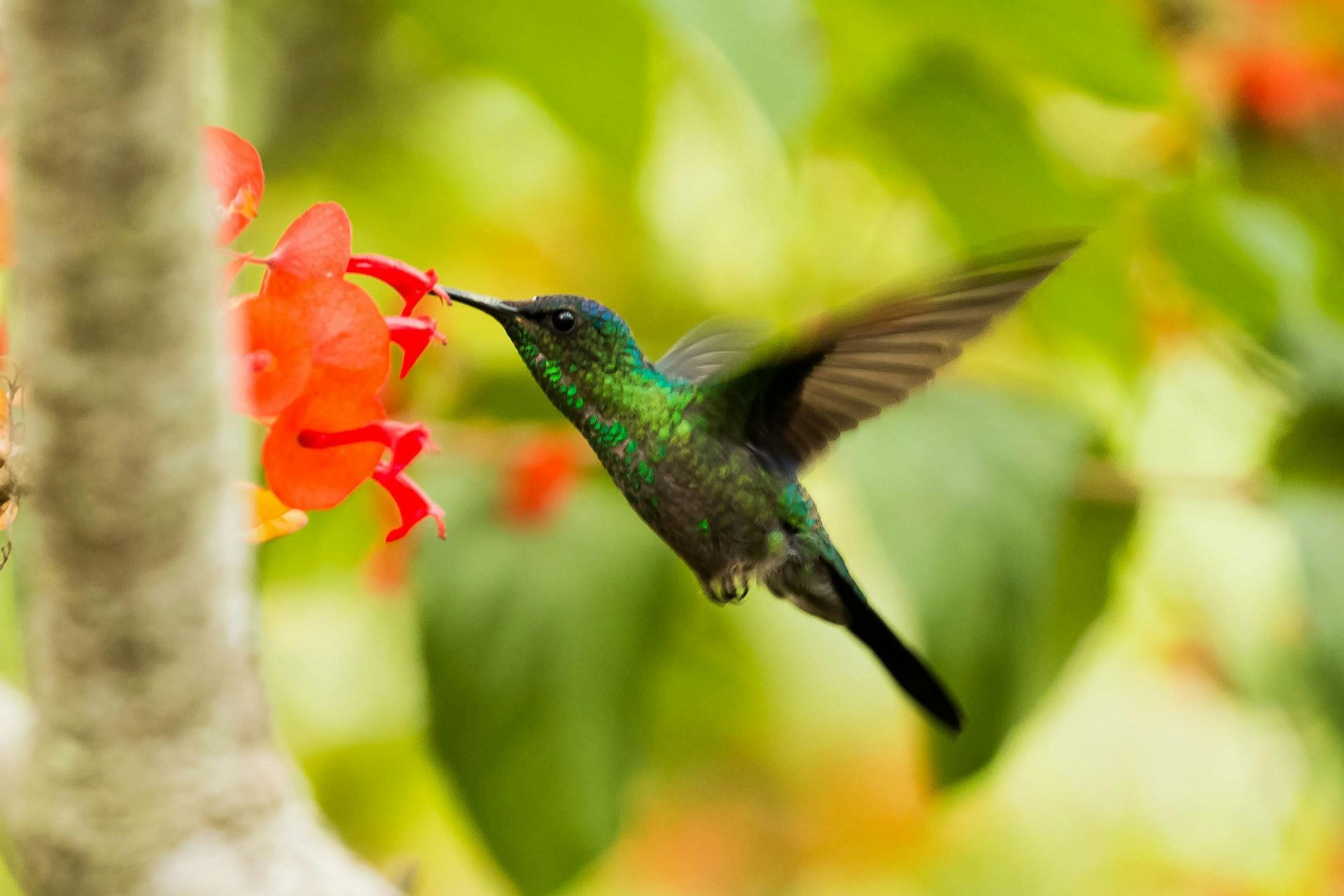
In mid-August, the Ruby-Throated Hummingbirds are back in our area for their fall migration! Since you can expect to see increasing numbers of them, stock your feeders and yard with plants to attract & fuel them for their long journey south! The Ruby-Throated Hummingbird, the East Coast’s most common hummingbird, is certainly one of the most fantastic creatures in Gulf Coast gardens. These garden jewels will stay with us until they begin to migrate further South, usually in mid-October. To understand why we see so many hummingbirds in spring and fall, and very few or none in summer or winter, let’s learn a little bit about these fascinating friends. Considered the acrobats of the natural world, hummingbirds are an endless source of amazement. Not requiring forward thrust to maintain flight, the peerless hummingbird can hover in place, perform somersaults, or even fly backwards and upside down! Their behavior is also quite spirited. Hummingbirds are extremely active, territorial, and even aggressive, behaving much like tiny little warriors, competing for the best food and shelter. And all this from the smallest feathered animals on earth. The metabolism of a hummingbird is extraordinary. Their hearts beat a staggering 1,200 times per minute, whereas in full flight – up to 50 mph – their wings may beat as many as 200 times per second! You can clearly hear a hummingbird in flight, oftentimes before you ever see it. This astounding capability helps to explain their diminutive size – a larger bird would never be able to power such thrust. They hold virtually every record on being tiny, from lightest bodyweight to shortest beak-to-tail length to lightest eggs, all in support of that Olympian speed and endurance. It is a wonder that such tiny things can explode with such energy, but there is at least an easy answer as to how that’s possible – hummingbirds are voracious eaters. They are so territorial over food resources because their very lives depend on a steady intake of calories to maintain that movement. Seeds are simply too heavy and slowly digested to do the hummingbird any good. Hummingbirds will feed up to ten times per hour on straight sugar – in the form of plant nectar, of course – just to keep themselves in the air. Insects & spiders are also an important source of protein and minerals. The plant in turn gets pollinated by the hummingbird, so the act of feeding is mutually beneficial, and is one of the most fascinating relationships in nature. The showy petals exist exclusively to attract insects and birds to the plants; otherwise we would not have any beautiful flowers at all. Hummingbirds are so dependent on a steady diet of nectar that they are particularly attuned to the seasons. The places on earth that provide a food source year round are few, so they migrate vast distances (4,000 miles for the west-coast Rufous Hummingbird) to follow the sequential spring and fall bloom of plants, from tropical Central America all the way up to Canada and back. They cannot afford for a plant to stop blooming before moving on to find more food, so they probably use the duration of daylight to determine when it is time to start moving south. Their lean build comes at the expense of sparse reserves of fat. It is impossible for hummingbirds to endure times without a food source. Another hardship of the hummingbird is that its short, stout wings are not made for gliding flight. They flap their wings for every inch of the 25 or so miles per day they may travel. In fall, many Ruby Throats congregate along the Gulf Coast to store up enough energy for one final burst across the Gulf of Mexico or across arid portions of Mexico before reaching the rainforests of the equatorial zone. When we have mild winters, it is becoming more and more common for some hummers to stay along the coast instead of braving ahead to Mexico, including some western species we would not otherwise see! Winter sightings in Louisiana have included the Rufous, Black-Chinned, Buff-Bellied, Calliope, and Allen’s and Anna’s hummingbirds. So, what can we do to get more hummers in our yard every year? The main ways to attract them to your garden/landscape are to accommodate them with food and water. Of course, hummingbird plants are a must! The aptly named Autumn Sage (Salvia greggii) hits a peak bloom in the fall, but any variety of Salvia will be a hummingbird favorite. A number of other tubular blooms are great nectar plants for hummingbirds, from Porterweed to Cigar Plant to Mexican Fire Bush to Cat’s Whiskers. Bottlebrush is a shrub that blooms in spring and fall and is another favorite. If you have a large area for a big, woody vine, Trumpet Creeper is an absolute hummingbird magnet! See an associate at the Garden Center for a more planting ideas! Of course, hummingbird feeders provide an easily maintained source of nectar – stir 1 part white sugar into 4 parts hot water, and always let it cool before filling your feeder. Don’t want to make it yourself? We sell already made, pour and go nectar! Always keep hummingbird feeders clean and free of mildew with a pipe cleaner. Hummingbirds, with their high metabolism, also like a place to perch nearby for frequent breaks. Small trees or large hedges are ideal, but a metal or wooden perch can be hung on a shepherd’s hook, as well. Bird baths should be kept clean and full for hummingbirds and other migratory birds, especially at this time. Last but not least – please do not spray your hummingbird plants with chemicals or systemic insecticides. If insecticides are needed, use horticultural oils or insecticidal soap! An amazing fact is that a hummingbird that feeds in your yard one year will return to that food source every year! So, if you’ve seen them in your yard before, make sure to keep up your supply for them. If you don’t get as many or any, come over and let us help you change that for this season! If you use nectar, it’s important to always keep it clean and fresh. Hummingbirds stay clear of fermented nectar, which supports deadly mold growth. Feeders should be cleaned twice once a week in our hot weather. This prevents harmful microorganisms from forming. Summer Plants to Attract Hummingbirds Want to appeal to hummingbirds? Consider these flowers they love to visit during their fall migration: For further growing information on each one, come visit us! We’d love to tell you all about these, and send them home with you! Bee Balm Bottlebrush Butterfly Bush Canna Lily Cardinal Flower Cleome Cigar Plant Compact Fire Bush Pentas Lantana Daylilies Flowering Tobacco Impatiens Porterweed Salvia Verbena Hummingbird Fun Facts: During their migrations, they fly 500 miles nonstop over the Gulf of Mexico! To make that journey, they need to weigh 1.5x their usual weight. Bring on the nectar! Flying speeds can reach up to 60mph! They can fly forward, backward, up, down, upside down briefly, and even sideways! However, flying is their only mode of transport- they cannot walk. Hummingbirds beat their wings 78 times per second! When diving, it more than triples to 200 times per second! Their heart beat 1,260 times and they take about 250 breaths per minute. Their tongues can reach out over 2-3’’! Perfect for trumpet-shaped flowers! They live an average of 3-5 years. For more migration information, click here! Come see us to stock up on everything you’ll need to supply our quick-winged friends for their journey! Good luck viewing hummingbirds in your own back yard!
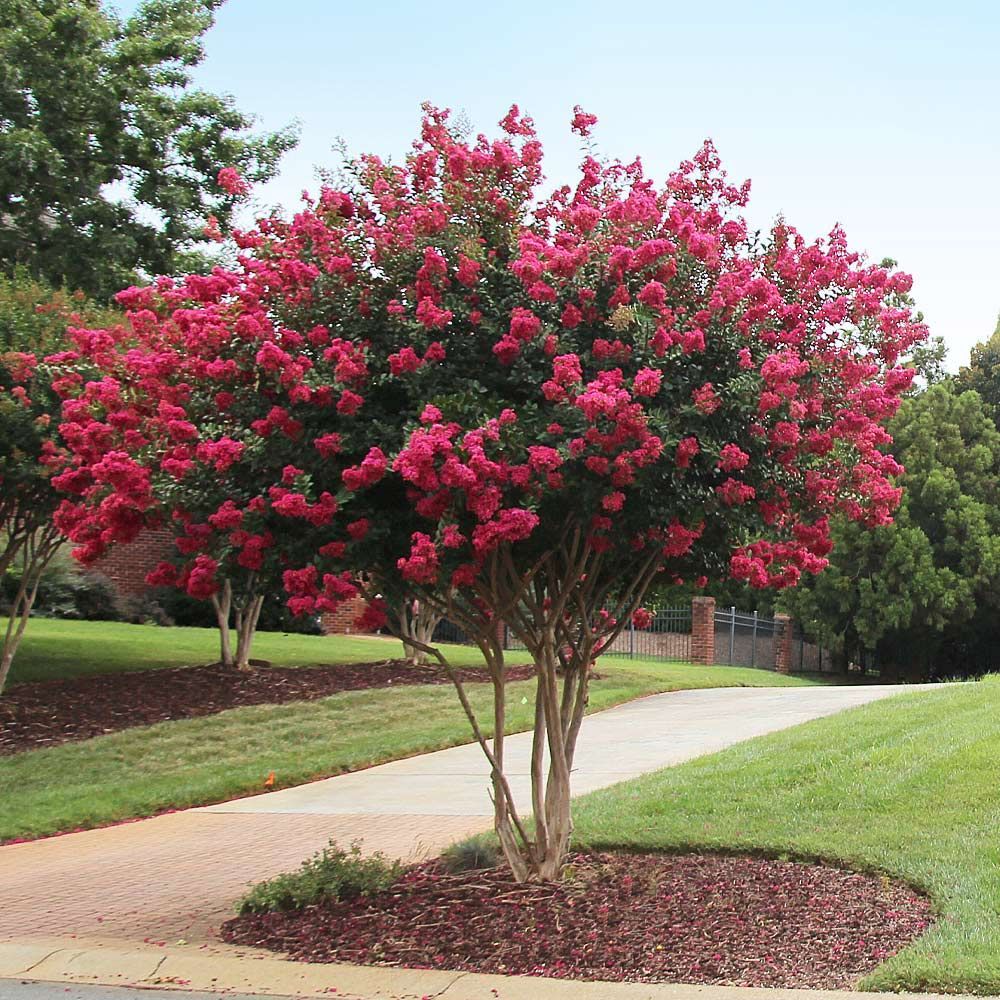
This top-flowering and easy-to-grow tree or shrub is the queen of the South and great for summer color. Crape myrtles are hands down the mainstays of our Southern summer landscape. Whether you spell it crape or crepe (keep in mind that the Crape Myrtle Society of America uses the “a”) or play it safe with the universal Latin name Lagerstroemia, the versatile shrubs and trees are sturdy backbone plants that provide both lush summer flowers and striking winter texture; many have intense orange, yellow, or red fall colors as well. The leggy trunks of crape myrtles are satiny smooth and buff tan, which is revealed when the shaggy outer brown or grayish outer bark flakes off in large shards. What makes crape myrtles so irresistible are the spectacular late spring, summer, and fall flowers. The super frilly, crepe-like individual flowers of white, pink, lavender, or deep red – and even some bi-colors - are arranged at the ends of twigs in either small loose clusters or tight, heavy football-size panicles, and appear all season on new growth. After flowers fall, small round seedballs form, which can be left on or cut off to stimulate a strong flush of new flowering growth. Four-Season Beauties Crape Myrtles come in a wide array of sizes and shapes. Different varieties can be naturally rounded or upright and vase-shaped, and are easily pruned to accentuate either. Don’t Commit “Murder” When pruning them, take the proper steps to not commit what we call “crape murder”. When pruning, selectively remove whole limbs to thin out the inside of the plant. This allows for better air circulation and less disease issues. One of the most beautiful aspects of a Crape Myrtle is the artistic look of the trunk and branches in their natural growth habit as they age. If pruned incorrectly (severely pruned back or chopped off at the top) the look is ruined. Provide Proper Care Plant in a sunny location - Crape Myrtles need at least afternoon sun. When planted in a part shade environment, they tend to not bloom well and have disease and insect problems. Fertilize regularly - These hungry plants will grow even faster and bloom more if fertilized once in spring and at least once during the growing season. Here's a trick to get your Crape Myrtle to go through another complete bloom cycle. After they bloom out, trim back all the meristems (the tips) where the flower clusters are before they go to seeding and fertilize them. This will create immediate new growth which will bud and bloom another cycle. All Crape Myrtles can be planted year round but require a lot of moisture their first summer before they have developed a mature root system. Problems with crape myrtles include not flowering well or at all, usually caused by a combination of factors that include not enough sunshine, poorly-drained soil or other root damage, or excess fertilizers. Powdery mildew often encases and disfigures new growth with a white mold; while many new varieties are resistant to this disease, plenty of sunshine and good air movement will reduce its impact better than routine fungicide sprays. Aphids and leafhoppers suck sap from twigs and bottoms of leaves, and their sticky, plant-sugary dripping leads to the growth of a thin but unsightly black “sooty mold” on lower leaves and anything else underneath the trees, which can cause premature leaf drop. The only control is either regular spraying for aphids, soil-applied systemic insecticides, or simply rinsing the leaves with soapy water followed by clear water, which causes the mold to dry and flake off. If you ever run into problems, call us for the right plant health care. Versatile Grow crape myrtles as specimen and accents, narrow trees for fast shade, along streets or driveways, screens, or stately groups underplanted with groundcovers, bulbs, or small shrubs.

July is the time to cut faded flowers from flowering annuals & perennials to encourage new growth and blooms. Old blooms and seed heads left on the plants can negatively affect the flower's continuous production. There are a number of advantages to deadheading: it will improve the appearance of a plant by removing the unattractive dead flowers that are mixed with the newly opened blooms. It will encourage annuals to bloom more and for a longer period of time. For those that self-seed, it will prevent unwanted seedlings from popping up all over the garden. The plants that respond best to deadheading are those annuals and perennials that bloom over a relatively long season and some summer-flowering trees. JULY TO DO LIST: -During dry spells, keep the garden watered. Remember: soaking is more beneficial than a daily light sprinkling. -Watering between 6-10am is ideal to avoid evaporation. -Conserve water, relieve plant stress and control weeds by applying a 2'' thick layer of mulch. -Plant all tropicals. Water well and they will thrive in this heat. -Plant heat-loving annuals. -Feed perennials and annuals to keep them blooming. Organic fertilizers like Fox Farms or Dr. Earth are ideal because they are organic and won't burn the plants in this heat. -Water lawn in the early morning so it will have time to dry before night. -Keep birdbaths clean and full, especially this time of the year. -Prune azaleas no later than mid-month. -Keep caladiums well-watered during this hot, dry weather to keep the foliage in good shape through the summer. You may apply fertilizer now to encourage vigorous growth. Break off any flowers that form. -Finish pruning with any shrubs that bloom in the winter or spring. Pruning too late may interfere with flowering. -Keep up with weeding as they can get out of hand very fast this time of year with all our rain.
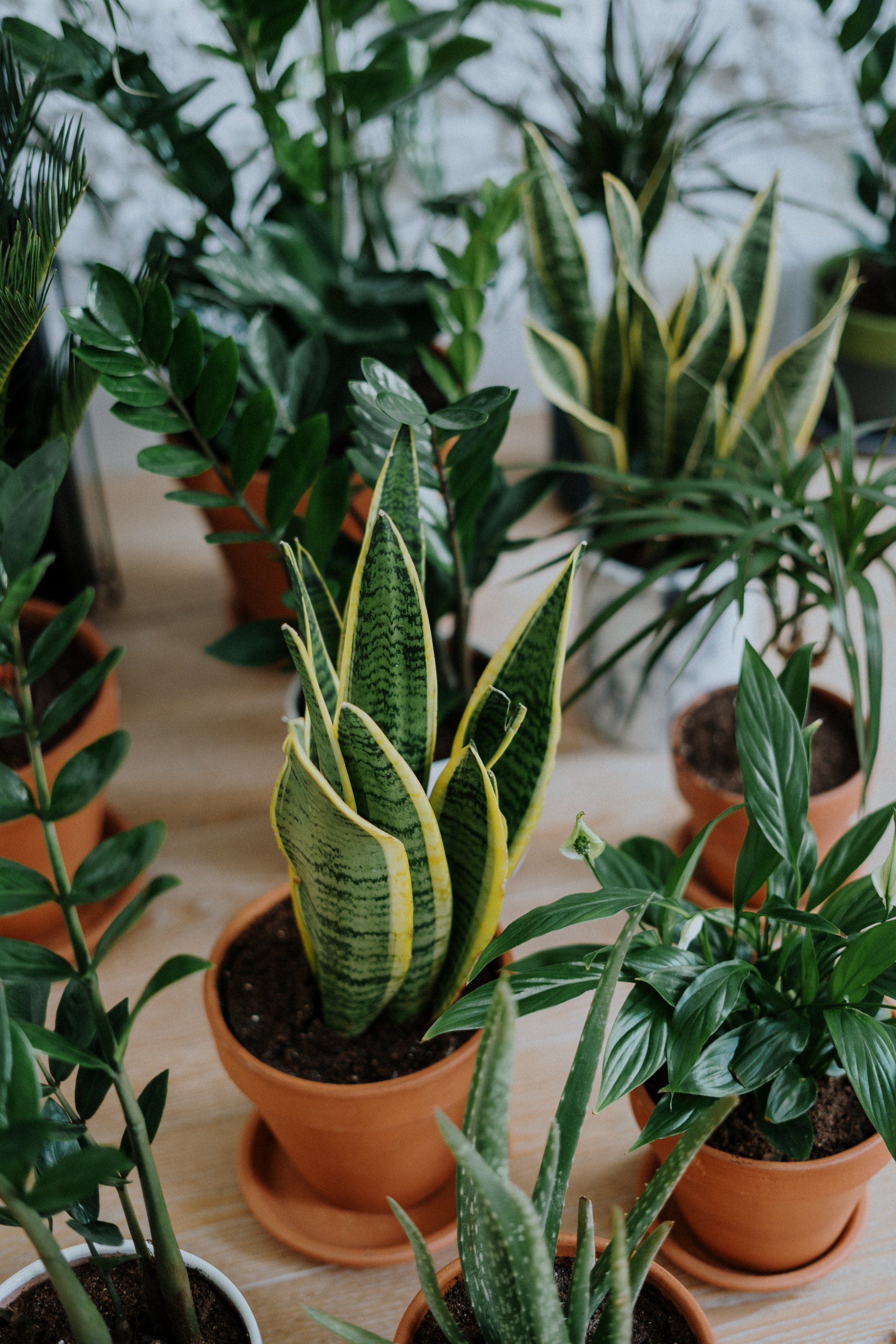
Whether you have a few ficus or a dozen dracaena, you probably already know that they benefit you just by being there. There's nothing like the sight of fresh greenery thriving in your home, but did you know that houseplants have benefits that go beyond just making your home look nice? Here are some reasons why it's okay to adopt as many houseplants as you want! They Reduce Stress Everyone has a little, some have a lot. We're talking about stress and the obvious truth is, it isn't good for you. Want to combat some of those worries? Introducing a houseplant (or a few) will help. Pick up a snake plant the next time you're here. They're easy to care for and their air purifying qualities can aid in reducing anxiety and relieving respiratory problems and headaches. They Give Purpose Houseplants don't survive without a little care and a lot of love. One of the best things about these beneficial additions to your home is that they are easy to care for. It doesn't take much time but you will feel great knowing you are helping keep one alive and thriving. They Purify the Air Did you know that studies done by the Environmental Protection Agency (EPA) show that indoor air can be more polluted than outdoor air? Introducing a few houseplants can help bring your air pollution down and help you breath a sigh of relief. Spider plant, Boston Fern and golden pothos are all great air purifiers removing a variety of toxic chemicals from your indoor air including formaldehyde. They Help Our Health What if you could place something in your home that will help keep you from getting a sore throat or even stave off that next headache? Studies have shown that adding plants to your home or office can actually reduce these types of illnesses. They Make You Smarter Plants won't turn you into Albert Einstein, but they can help improve your concentration. A study published by the Journal of Environmental Psychology shows that having plants in an office increases worker's attention span. Adding some greenery to your home or office can also help your problem-solving skills. So add a spider plant, palm or peace lily to study areas and offices. See how your concentration improves. It's the perfect time to add some houseplants to your home. Stop in and see our huge selection in our greenhouse!
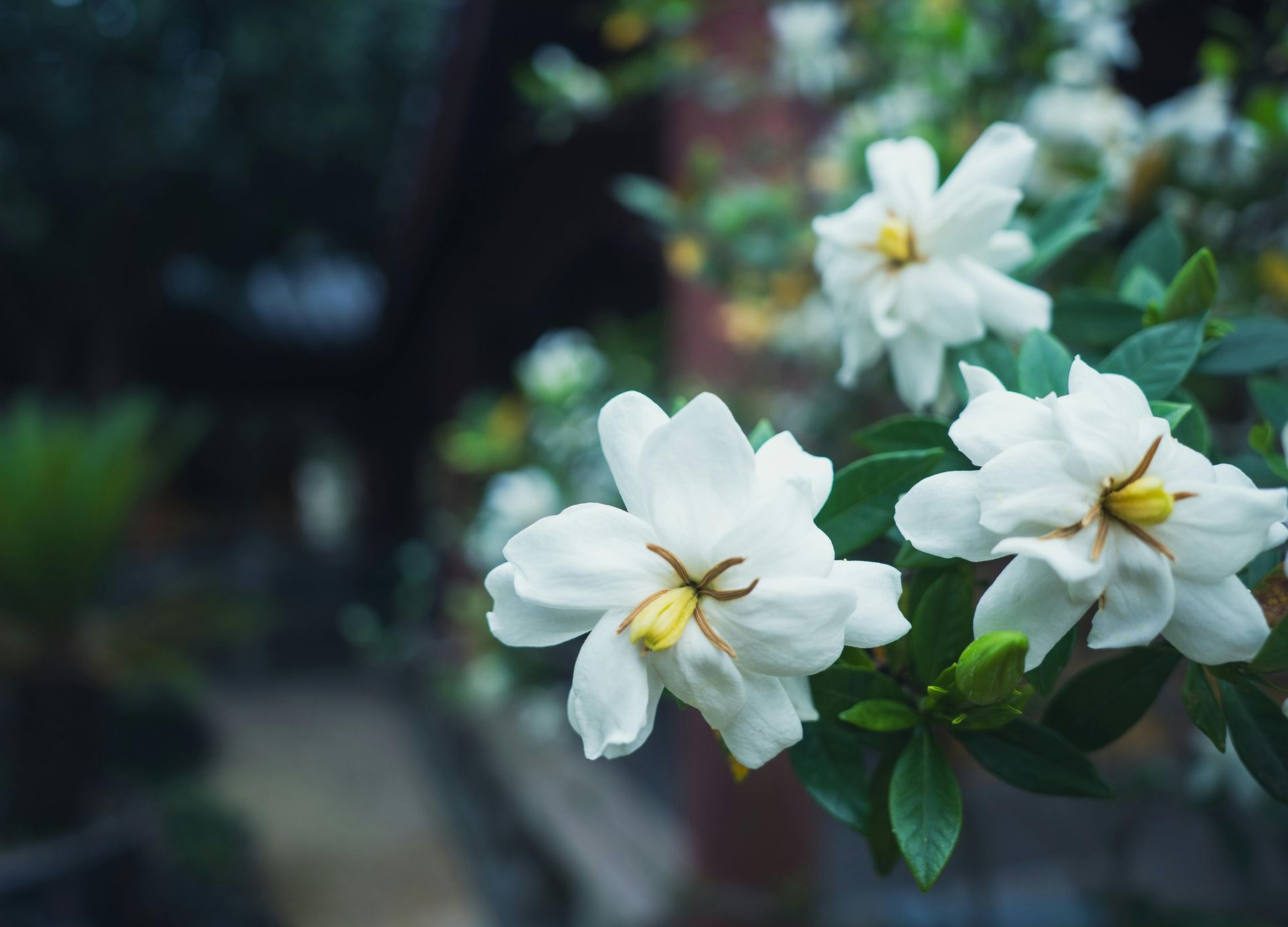
These astounding shrubs can get any gardener through the summer doldrums. Bottle Brush Bottle brush (Callistemon) has very aptly-named flowers on medium to large shrubs or small specimen trees. It performs well in pots if kept moderately dry in the winter. Plant in full sun, well-drained soil. Many have survived our recent freezes, proving their hardiness. Come August, hummingbirds will flock to them all over your landscape! The added benefit to that is they will remember where those bottlebrushes were, and keep returning year after year! Gardenia Cape jasmine is an evergreen shrub with intensely fragrant ivory flowers. often grown as a landscape shrub or even a potted plant near a doorway or area frequented by guests. Plant in sun or part shade. Abelia Abelias, like the kaleidoscope or twist of lime, are fantastic choices for attracting butterflies and hummingbirds. Staying fairly small, their leaves turn colors to attract attention and they bloom sweet white flowers! Plant in full sun or part shade. Crape Myrtle Crape Myrtles are super summer-flowering shrubs or container specimen if a dwarf variety. Plant in full sun, and check out our darker leaf varieties for a new specimen interest! Rose America's official Floral Emblem comes in many forms, sizes and flower colors, with some being very disease-resistant as well. Selections can be found to grow in every climate, and many are fragrant to boot! The best selection of roses arrives in early winter. At that time, pick your favorites to enjoy through the seasons into summer! 'Anthony Waterer' Spiraea 'Anthony Waterer' spirea has masses of dark pink to crimson red flower. Plant in full sun or part shade. Vitex Chaste trees flower heavily in the summer and are super attractive to bees. The shrub is very drought-tolerant. Enjoy new arrivals like the Pink Pinnacle or Blue Puffball, or old favorites like the Delta Blues or Shoal Creek. Plant in full sun. Angel Trumpet Brugmansia is a summer-blooming shrub for us in South Louisiana. With blooms truly show-stopping in white/purple or yellow, you’d think these really are the trumpets of the angels. Rose of Sharon/Althea Rose of Sharon (Hibiscus syriacus) flowers resemble a rose-like hibiscus and are available in sweet shades such as light pink, white, light purple, and even a more vibrant purple. Plant in full sun or part shade. Yucca Yuccas flower in the spring and summer with edible flowers. These strappy-foliage plants look great in rock gardens or areas with succulents or agave. Plant in full sun. Pineapple Guava Pineapple guava has incredibly exotic flowers that are perfectly edible. Plant in sun. Magnolia 'Little Gem' Magnolia grandiflora ‘Little Gem’ is a compact shrub with super glossy evergreen leaves and highly-fragrant, small white flowers that appear from spring to fall—the longest blooming magnolia! Plant in full sun to part shade. Hydrangeas With their cotton candy-colored blooms and ability to take the shade, hydrangeas are one of the most beautiful summer-flowering shrubs. Flowers of hydrangea macrophylla can be pink, blue or in-between depending on the acidity of the soil—a lower pH yields deeper blue flowers; higher pH in alkaline soils results in pink flowers. We have the right products to do the trick on your soil if you want to play the color changing game! Oakleaf Hydrangea Oakleaf hydrangea is a woodland native whose flower bracts remain well into winter. Plant in part sun to shade. Yesterday, Today and Tomorrow Brunfelsia pauciflora is an old "passalong plant" whose flowers fade from purple to white, giving its common name. It flowers best in full sun, but thrives in hot summers if kept in light shade. Oleander Oleander is a multiple-stemmed shrub for which dwarf forms are available, some with variegated leaves. It thrives on neglect and drought. Note: All parts of the plant are extremely poisonous if ingested. Plant in full sun. Please note- All Seasons may or may not have these plants in stock available to purchase at the time you come to purchase these. If you're ever looking for something specific, please call the garden center at 337.264.1418 or send an email question via this link prior to your shopping visit!
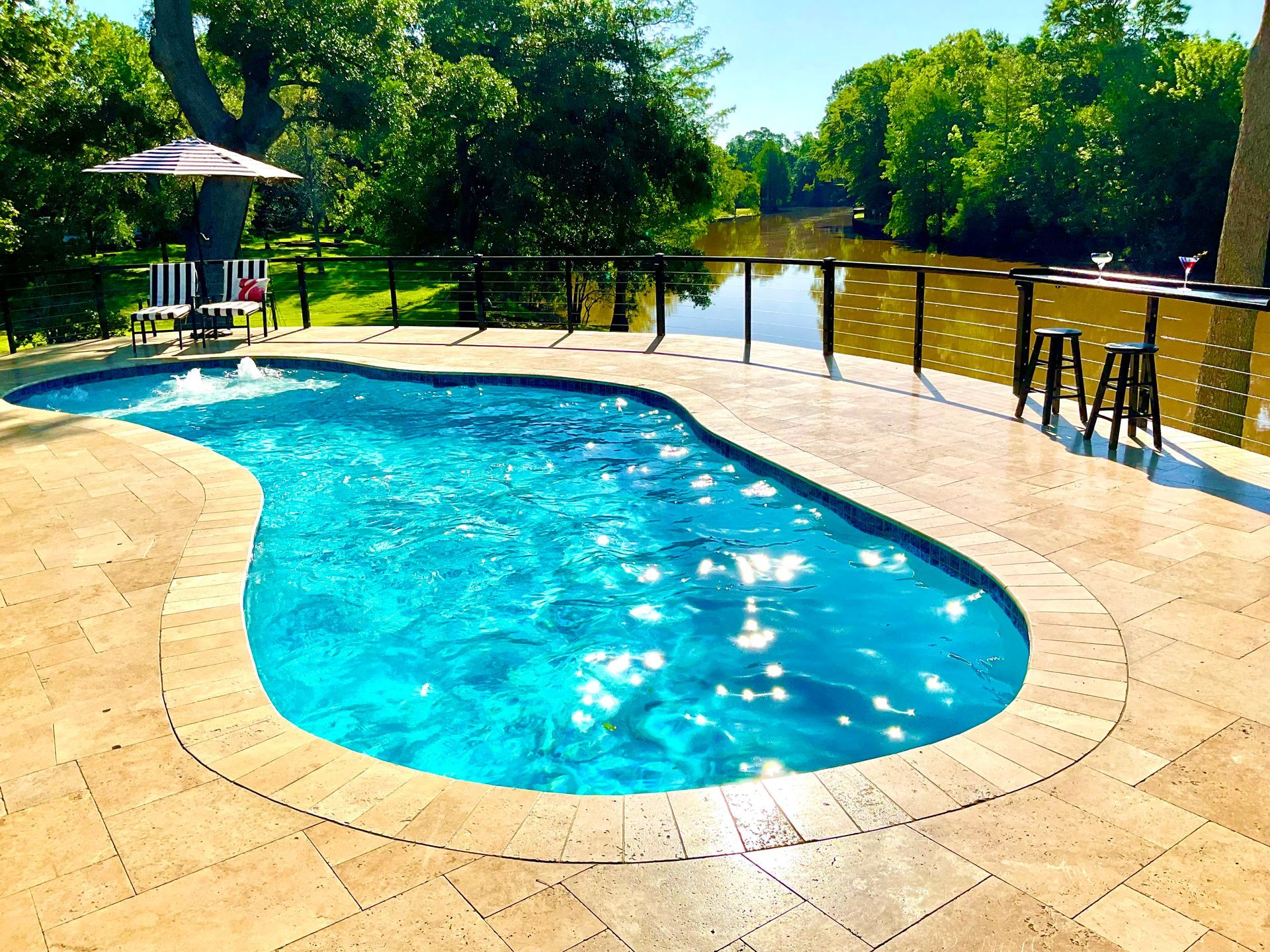
Why not create a backyard living environment that makes you want to take a “staycation” this summer, and all year? Outdoor living has never been more popular! Grill outside while cheering on your favorite teams; sip wine while visiting with friends on a chilly evening near the outdoor fireplace; smile while watching the kids jump from a natural rock waterfall that spills into the pool; or perhaps sit quietly after a long day reading a new book. Outdoor living inspires a connection back to nature. The goal is to step out of the four walls brimming with artificial sunlight. See, feel, hear, and experience Mother Nature! Homeowners are yearning for an improved outdoor environment. Outdoor living spaces are like outside “living rooms” complete with the luxuries from inside your home. Cypress pavilions create a backdrop ideal for Southern entertaining and memory-making. With a travertine stone patio, the living space can be extended, a courtyard can be conceptualized, or it can play the role as a more natural setting for a pool. Having a pool brings the essence of summer into a backyard year-round. By incorporating a hot tub, fountain, waterfall, slide, tanning ledge and night lighting, your favorite getaway spot becomes more than “just a pool.” Relax an afternoon away while listening to the trickle of water from a pond and/or stream in your backyard. The possibly of what your outdoor “room” will be are endless! We can’t forget adding plants to a space to really enhance the laissez-faire attitude! Success is achieved when the right plant is in the right environment. Another key component is to note the neighboring plants adjacent to where the new plant will join. This is relevant because a variation in texture is an important element of landscape design. It’s not how a plant looks, but how it looks in relationship to everything else around it. It’s essential to have a distinction in size, texture and blooming sequence. Not only will it make a landscape look beautiful immediately, but it will look incredible down the road. Backyard landscaping and outdoor living enhances the senses and soothes stress daily. What are you waiting to? Live life outside! Contact our Landscaping Services to schedule your Free Consultation for an outdoor living masterpiece!
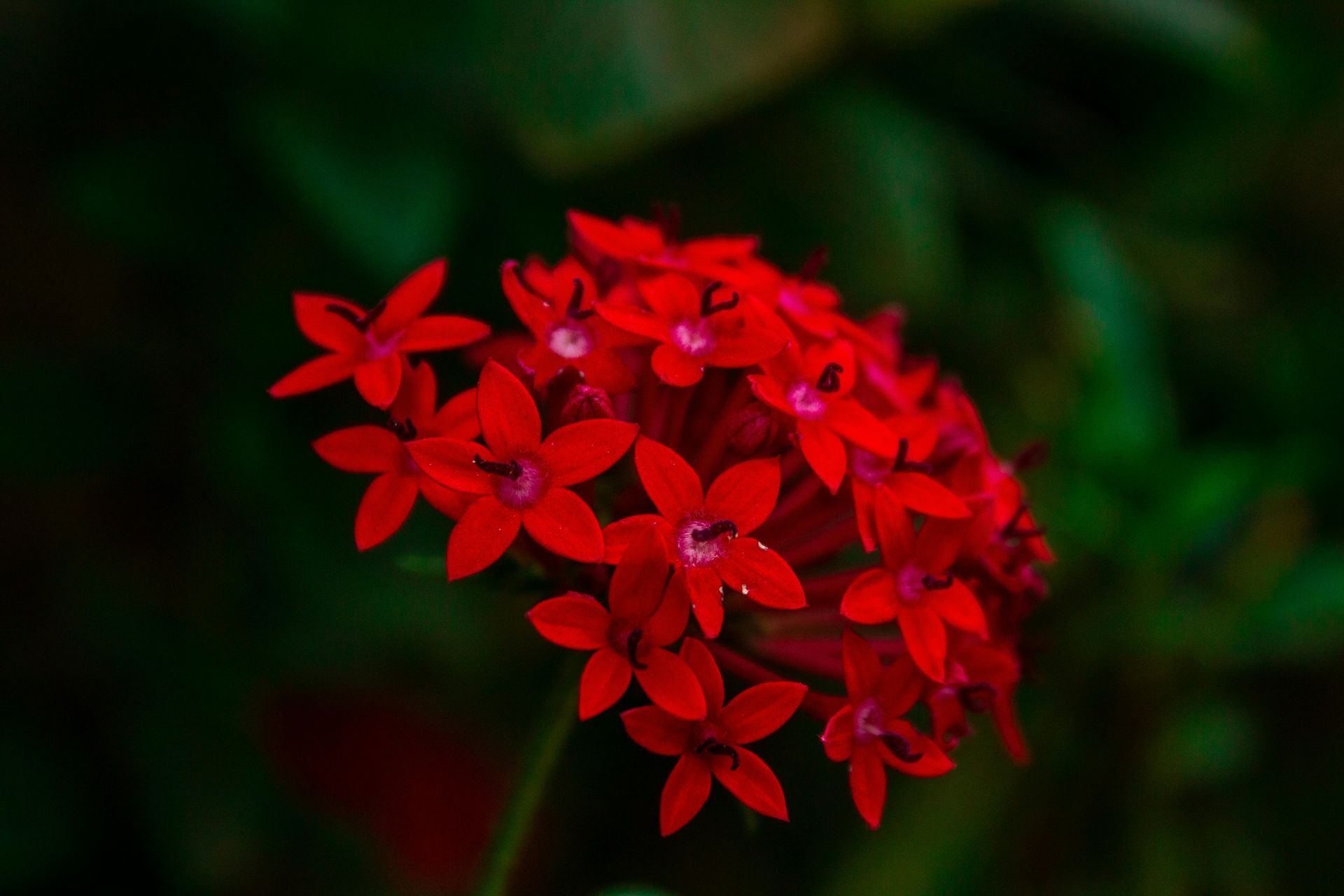
The colors red, white, and blue are always on our minds during summer, as the anniversary of our nation’s independence approaches. What better way to celebrate your pride than by planting a red, white, and blue garden? Blue is one of the most elusive colors in nature, but we still have plenty of options for you, in both shady or sunny areas. Blue Daze (Evolvulus glomeratus) Blue Daze is a gorgeous tender perennial that typically considered an annual in Louisiana, though they will often persist year to year if the winter is mild. This mat-forming groundcover will become loaded with true-blue flowers that open in the morning and close at night, like its cousin, the much more aggressive Morning Glory. Always well-mannered, there is now a dwarf version called ‘Blue my Mind’ that is even more compact. Vinca, Madagascar Periwinkle (Catharanthus roseus) Vinca is the workhorse of the summer garden, thriving on heat and neglect. Technically a tender perennial, vinca is considered an annual, as it dislikes both heavy frost and cool, damp soil. Plant some red and white vinca behind Blue Daze, and your patriotic garden will give nonstop blooms well through summer into late fall. Pentas (Pentas lanceolata) Pentas are a great annual or tender perennial for the middle or back of beds. Requiring very little maintenance, Pentas are attractive both to the human eye and to all types of hummingbirds and butterflies. Available in red or white as well as shades of pink and purple, you can’t go wrong with putting a few Pentas in your flowerbeds! Firecracker Cuphea, Bat-Face Cuphea (Cuphea llavea) This trailing perennial gets more loaded with red tubular blooms the hotter it gets. A hummingbird magnet, Firecracker Cuphea is related to Cigar Plants and Mexican Heather, and is every bit as tough. They will make a sprawling, groundcover-type perennial in the ground, but this plant also looks great in hanging baskets or in pots. Endless Summer Hydrangeas (Hydrangea macrophylla) The best-blooming shrubs for summer color in the shade, Hydrangea offers large flowers in blue, white, and pink, and Endless Summer varieties are particularly happy to rebloom throughout summer into fall. Blue Hydrangeas can be turned pink and vice versa by changing the acidity of the soil, but white hydrangeas are distinct varieties and must be purchased as such. Blushing Bride is the white Hydrangea in the Endless Summer line. Plumbago, Cape Leadwort (Plumbago auriculata) Plumbago is one of the most vigorous and free-blooming perennials you can put in your garden, coming back reliably year after year and typically blooming from April to first frost. Plumabgo is one of the true-blue flowers that do very well in our climate, and they also come in white! Plumbago is a large, bushy perennial, so it can serve as a foundation plant in landscape designs, much the same way shrubs are used in the back of beds to unify a color scheme. Salvia (Salvia spp.) Salvia are actually a large genus of closely related plants that have common characteristics, including large, tubular, colorful blooms that flower over a very prolonged season. Red perennial salvias include Autumn Sage and Pineapple Sage, where as blue blooms can be obtained by planting Black and Blue or Victoria Blue Salvia. These plants are perennial, meaning they come back year after year, and they are a favorite of hummingbirds whenever they are in bloom! Wax Leaf Begonia (Begonia semperflorens) Begonias are old-fashioned favorites for shady areas (although there are types that take sun, as well), and they come in red and white, as well as shades of pink. They are drought-tolerant, bug resistant, and free-blooming without the use of special fertilizers, although they don’t like areas that stay especially wet. Begonias are essential for those trying to brighten dull, shady areas of the yard, especially if soil is poor and nutrients are scarce, such as around the roots of trees in the landscape. Mandevilla (Mandevilla spp.) Mandevilla is a tropical flowering vine that can endure light frost, and blooms nonstop from summer into fall. Large, trumpet-shaped blooms in red, white, or pink can easily cover a trellis, fence, or mailbox. Be creative and find different things for Mandevilla to climb on. A living wall can be obtained by planting a Mandevilla on the edge of a patio and attaching string, wire, or netting from the eave, allowing Mandevilla so scramble up and make a solid curtain of blooms. When winter comes and sun on the patio is more appreciated, the Mandevilla will die back naturally and re-sprout the following spring if its root is protected from frost. Knockout and Drift Roses (Rosa hybrida) These ever-blooming landscape shrub roses defy the conventional thinking that roses must be high-maintenance. They can thrive on neglect and are much less prone to disease than classic florists’ roses, although they do their best when given on occasional trim and a dose of fertilizer. They come in a wide variety of colors for any taste, but the classic red for both are probably the most hardy and free-flowering. Knockouts become very large and impressive with maturity, and Drifts are miniature roses that fit well in the front of flowerbeds as a groundcover. Wishbone Flower (Torenia fournieri) Torenia, also known as the adorable wishbone flower, is a newer tool in the arsenal of the shade gardener that offers especially vibrant colors in shady areas. Blooming in a wide variety of colors, we of course want to focus on the blue and white varieties for shady areas (a purply maroon is also available). The Kauai Torenia is the newest bedding plant for shade to join the family of LSU Super Plants, recognized by LSU Agricultural Research Station to be especially free-flowering and pest-resistant. Caladiums (Caladium x hortolanum) Caladiums rely on their bold, beautiful leaves to create a show in shady areas, so blooming – a physiological event sometimes difficult to perpetuate in bedding plants – is not required for them to look their best. They are always shining bright! Coming in a wide variety of red, white, and mottled tones, there are even caladiums that take sun. Some of our favorites are the newer hybrid forms, ‘Florida Moonlight’ and ‘Florida Sweetheart’. Their leaves seem delicate and silky, but, like silk, are very tough and durable. Please note- All Seasons may or may not have these plants in stock available to purchase at the time you come to purchase these. If you're ever looking for something specific, please call the garden center at 337.264.1418 or send an email question via this link prior to your shopping visit!
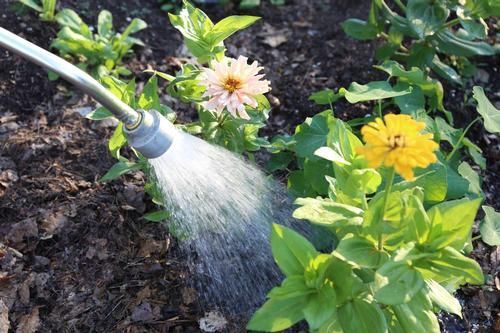
So you think watering is a no-brainer? Water for too long, and you engrave an open invitation for fungus. Water too little, and roots become shallow. Water in the evening, and insects come out to feast. Water from too high, and half the moisture is lost to evaporation. Yet, with a little knowledge, we can all become better consumers, better gardeners and better stewards of our environment. If you planted trees, shrubs, perennials, or annuals this spring it is now time to think about how to help them beat the heat. Does that mean to get out the hose and start watering? Perhaps. However, before unraveling the hose to water plants, there are a few details to consider: Plants that are growing in small containers will need watering every 2-4 days. Trees and shrubs in larger containers will need watering every 7-10 days. Annuals and perennials have smaller root systems than trees and shrubs. These will need watering every 3 to 4 days. Water thoroughly and deeply. Set the hose at the base of the plant and run water at a slow trickle – 5 to 10 minutes for small trees and shrubs and 10 to 20 minutes for larger. Less frequent watering is needed with rain– more frequent watering is needed with no rain and warm temperatures. Before watering, make a point to check the soil around plants for moisture content. If the soil around the base of a plant looks or feels damp, watering can be suspended until the soil moisture has diminished. If the soil looks or feels dry, it is likely time to water. Supplemental watering of new plants is only needed until the onset of cooler weather this fall. Here are 10 dos and don’ts when it comes to the most efficient ways to water: 1. DO Water early in the morning when sunlight is weakest, the ground is coolest and foliage will have hours to dry before nightfall. DON’T Water in the evening when soil is warm and wet foliage can attract insects, fungus and disease. 2. DO Water deeply and at fewer intervals so that you reach roots, the part of the plant that needs the nutrients, sugars and hormones contained in water. DON’T Water lightly and often, which promotes shallow root growth. (One of the worst watering crimes you can commit is to dash outside after work every evening and sprinkle the lawn for 10 minutes.) 3. DO Direct water at the base of a plant and avoid wetting foliage, which invites fungus. DON’T Water from overhead. Depending on the size of the plant, the water may never actually hit the ground because the foliage may overshadow the plant’s base. 4. DO Give lawns an inch of water per week during dry spells, which with a sprinkler takes about 90 minutes to deliver to one area. If you don’t have a water gauge, set out an empty tuna fish can. When it’s full, you’re done! DON’T Water a lawn more or less than what’s needed because the amount affects root growth—the foundation of a healthy, beautiful lawn. 5. DO Use irrigation systems with fixtures close to the ground. DON’T Use sprinklers that spray vast amounts of water into the air, most of which evaporate before it ever hits the ground. Avoid watering on windy days as well. 6. DO Give trees and shrubs—especially newly-planted ones—direct watering every 7 to 10 days. DON’T Rely on sprinklers and irrigation systems to reach the bases of trees and shrubs. 7. DO Use soaker hoses to water vegetable gardens. Again, hit the ground, not the plant. DON’T Use overhead sprinklers in vegetable gardens. More water is lost to evaporation than is absorbed by the soil. 8. DO Use a watering wand to water annuals and perennials, both in ground and containers. DON’T Use a hose and nozzle which casts a wide spray that wets the foliage and not always the ground. 9. DO Water container gardens regularly, typically once a day during hot, dry spells. Stick your finger in the soil. If it feels dry all the way to your second knuckle, it’s time to water. DON’T Think that container gardens need watering only when everything else does. Pots hold heat, so the confined soil dries out faster than garden soil does. 10. DO Mulch beds and containers with several inches of composted material, which cools soil, retains moisture and helps deter weeds. DON’T Water un-mulched soil. The force of the water can spatter plants with moist soil and cause runoff.
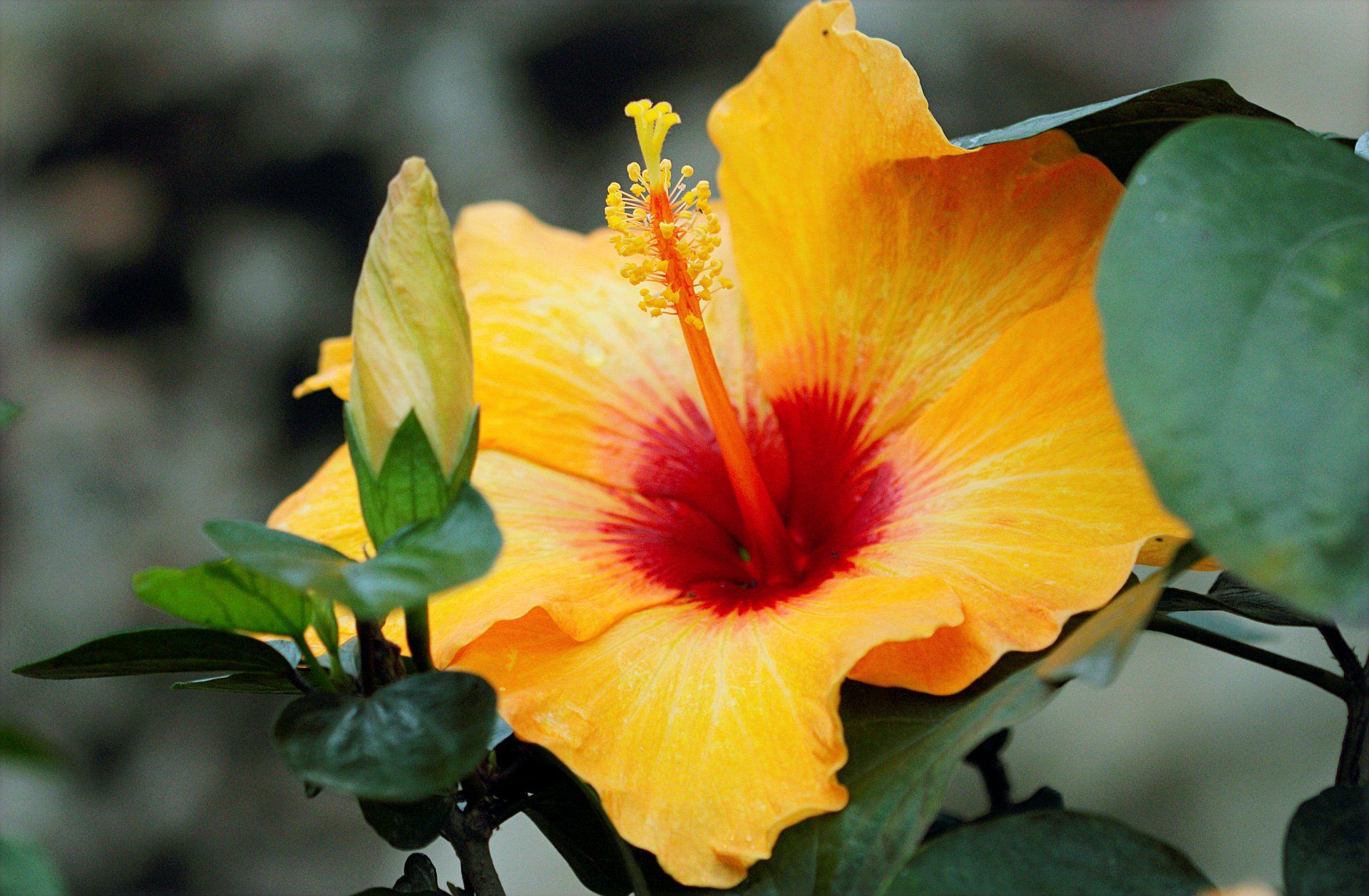
Growing hibiscus is an easy way to add a tropical flair to your garden. When you know how to care for hibiscus plants, you will be rewarded with many years of lovely flowers! Here are some tips on how to care for these tropical flowers: Growing Hibiscus in Containers: Many people who are growing a hibiscus plant choose to do so in a container. This allows them to move the hibiscus plant to ideal locations, depending on the time of year. Provide the plants with at least six hours of sunlight, especially if you want to see those lovely blooms. Although warm, humid conditions are ideal for tropical hibiscus, you may want to provide a little afternoon shade when it’s overly hot. Again, containers make this easy to do. Hibiscus plants prefer a cozy fit when growing in a container. This means that they should be slightly root bound in the pot and when you do decide to repot, give the hibiscus only a little bit more room. Always make sure that your growing hibiscus plant has excellent drainage. Hibiscus and Temperature: When you care for a hibiscus, you should remember that hibiscus plants flower best in temperatures between 60-90 F and cannot tolerate temps below 32 degrees F. In the summer, your hibiscus plant can go outside, but once the weather gets cold and we have another freeze, bring it inside protected. Watering Hibiscus: When hibiscus are in their blooming stage, they require large amounts of water. Your hibiscus will need daily watering in warm weather. But once the weather cools, your hibiscus needs far less water, and too much water can kill it. In the winter, water your hibiscus only when the soil is dry to the touch. Fertilizing Hibiscus: A growing hibiscus plant needs lots of nutrients in order to bloom well. In the summer, use a high potassium fertilizer. You can either use a diluted liquid fertilizer one a week, a slow release fertilizer once a month or you can add a high potassium compost to the soil. In the winter, you don’t need to fertilize at all. These are the basics for how to care for hibiscus plants in your garden. They are an easy maintenance, high impact flower that will make a garden in any part of the world look like a tropical paradise. We carry a special Hibiscus fertilizer called HibisGain, that has been developed by South Florida Hibiscus breeders who show their plants in national and international competitions. Always make sure your fertilizer says that it is for hibiscus and tropicals, not an all-purpose fertilizer. FoxFarm Ocean Forest potting soil is excellent for hibiscus, houseplants, and other tropicals. Fafard Ultra Potting Mix is another soil mix formulated especially for hibiscus and other tropical plants.
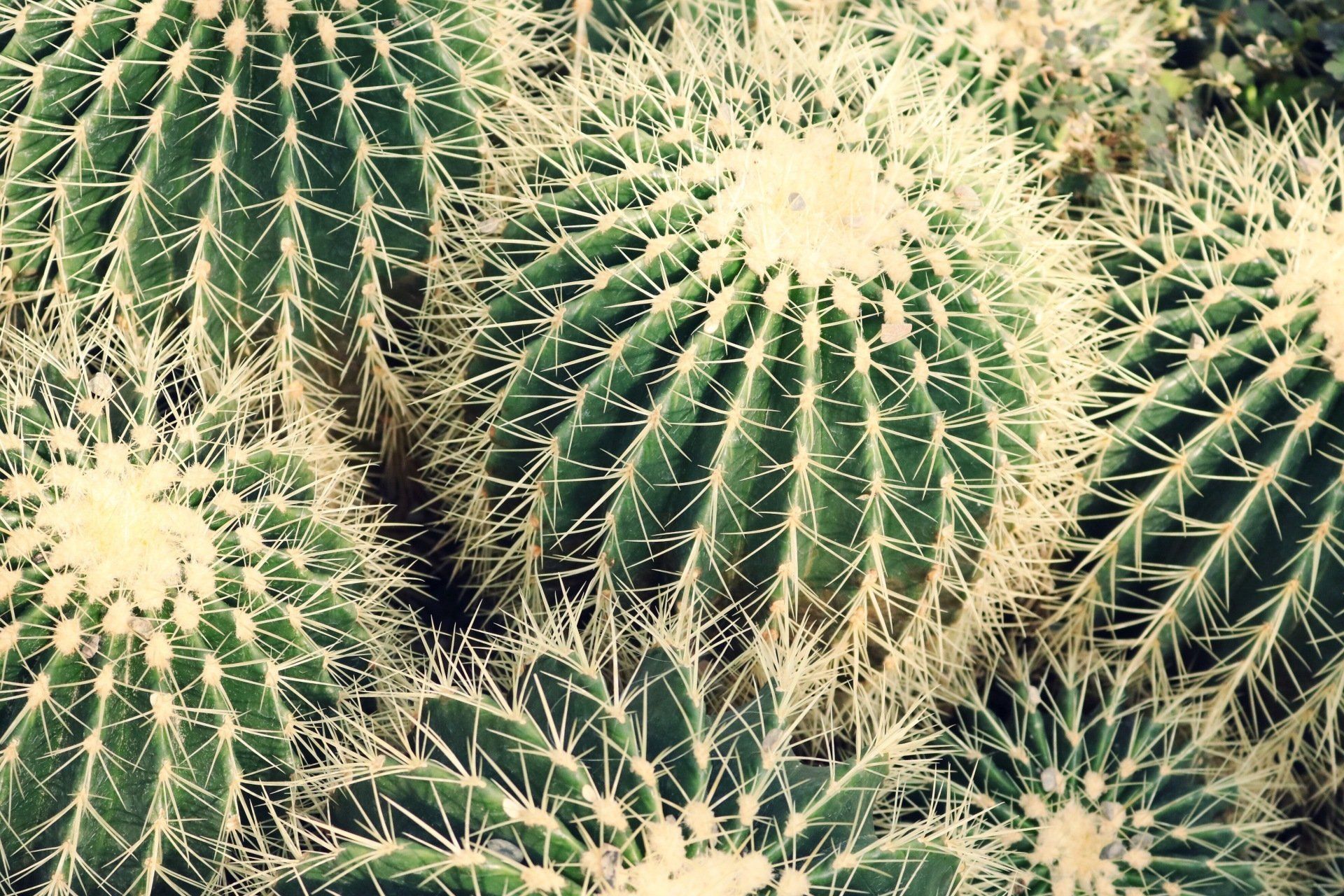
Cacti are easy to grow as long as you play by their rules. Cacti make great houseplants. They’re easy to grow because they’re tough desert dwellers that need little help from you to be healthy. No contemporary, eclectic or midcentury mod decor right now is complete without a potted cactus playing the role of living sculpture, so they’ve become the must-have houseplant. To keep a cactus happy and healthy, you must give it the right conditions, the ones it would get in its native desert. Here’s how to make a cactus thrive indoors: Light A cactus needs a ton of sun. Most varieties need at least eight hours of direct sun a day. Place them by a southern window or beneath a skylight for maximum sun time. Move them outside in the spring and summer so they can bask in 10 to 12 hours of real, unadulterated sun. Temperature In the spring and summer, when they’re in their active growth period, cacti like hot temperatures ranging from 70 degrees to 95+ degrees. In the winter, when they’re dormant, they like cooler temperatures, down to 55 degrees. Some cold-hardy cacti can withstand freezing weather. Water Cacti need more water in the spring and summer when they’re doing most of their growing and blooming. Water them whenever the soil is bone dry. In the winter, when they’re dormant, don’t water them unless they begin to shrivel. They’re asleep, so leave them alone. You may only need to water them two or three times for the entire season. How you water them is as important as how much you water them. There’s not much rain in their native deserts, but when it rains, it pours. We’re talking sheets of rain. Imitate those desert monsoons by drenching your cactus in water. Periodic deep soakings are better than frequent light waterings. Just be sure to let the soil dry out completely before you water again. Soil A cactus needs well-drained soil, so don’t plant it in standard potting mix. Standard potting soil holds too much water and can cause a cactus to rot at its base. Buy a soil mix made just for cacti, or mix up your own by adding one part perlite or pumice to one part standard potting mix. We have the right soil or soil amendments for you here. Repotting Cacti grow slowly, so you won’t have to repot often. Unlike other plants that should be repotted annually, a cactus can grow happily for years in the same pot. Remember, many species of cactus will bloom more if they’re in a pot that’s a little too small. Cramped roots stress the plant just enough to make it bloom. Fertilizer Feed plants only during the growing season, spring and summer. Cacti like acidic conditions, so use a specialty fertilizer. We have the right products here, so come talk to us about recommendations! Common Problems · Overwatering , especially in the winter, is the mistake cactus owners make. Too much water will rot the base or tips of the plant. Remember, don’t water it in the winter unless it starts to shrivel. In the summer and spring, when the plant is growing and needs water, let the soil get bone dry before you water it again. · Pests like mealybugs and mites can infest cactus, especially if you overwater them. We can help with this, too, so visit us whenever you’re in need to assure your cactus a healthy life!
